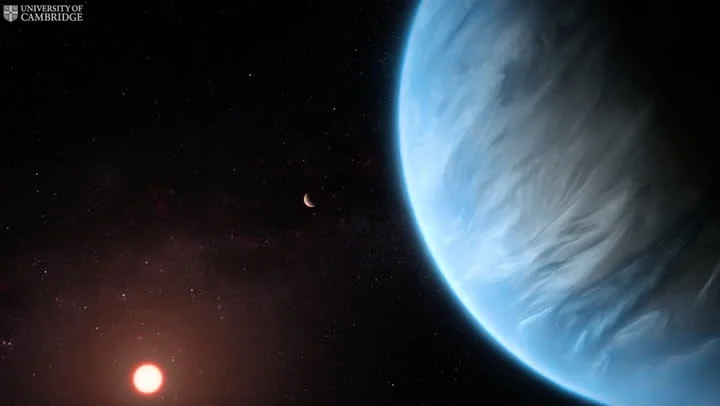
K2-18b Exoplanet: Are We Witnessing the Dawn of Extraterrestrial Life Discovery?
The scientific community is abuzz after the James Webb Space Telescope (JWST) detected potential biosignatures in the atmosphere of exoplanet K2-18b, located 120 light-years away. Is this the groundbreaking discovery we've all been waiting for, or are we jumping the gun? The search for extraterrestrial life has always been a field fraught with excitement and skepticism, but the latest findings warrant a closer look.
Recent analysis of K2-18b's atmospheric composition revealed the presence of methane, carbon dioxide, and, most intriguingly, dimethyl sulphide (DMS) and dimethyl disulphide (DMDS). On Earth, DMS/DMDS are produced almost exclusively by living organisms, making their potential detection on K2-18b a monumental prospect. Researchers even suggest a 99.4% probability that this detection isn’t a fluke.

However, cautious optimism prevails. While the detection of these compounds is a significant step, scientists emphasize the difference between detection and attribution. JWST doesn't directly "see" molecules; it analyzes how light interacts with a planet's atmosphere. Scientists infer chemical presence from these absorption patterns, a process that relies on complex models and assumptions about a distant world's atmospheric conditions and biological reactions.
The spectra suggesting DMS/DMDS may be due to previously unknown or misunderstood molecules, highlighting the challenge of interpreting data from such vast distances. Is the scientific community holding astrobiology to a higher standard? Comparing this with the detection of human-made climate change provides context.
The link between temperature and CO2 increases, first observed in 1927, gained acceptance upon routine temperature measurements. Fossil fuels, devoid of carbon-14, confirmed anthropogenic climate change. Analogously, detecting life beyond Earth has a vigorous "detection and attribution" phase. However, climate change research benefits from numerous in situ observations, while the search for extraterrestrial life relies almost solely on remote sensing, making systematic errors more impactful.
Ultimately, the claims about K2-18b remain compelling but inconclusive. The inability to independently detect and attribute multiple lines of evidence constrains us. Data from the exoplanet K2-18b has revealed the "strongest hints yet of biological activity outside the solar system", highlighting the significance of the information we've collected.
Despite the uncertainties, each new observation expands our understanding of the universe and our place within it. As the search continues, what do you think? Are we on the verge of discovering life beyond Earth? Share your thoughts in the comments below!